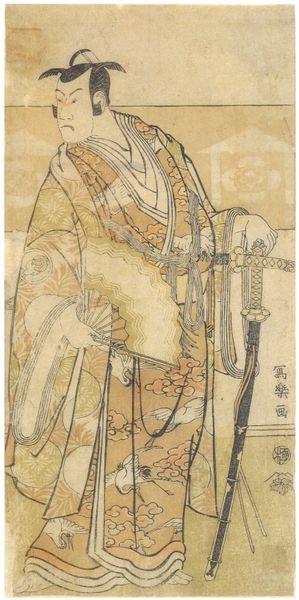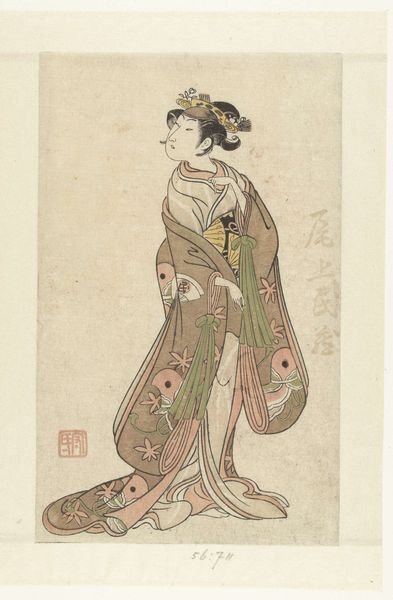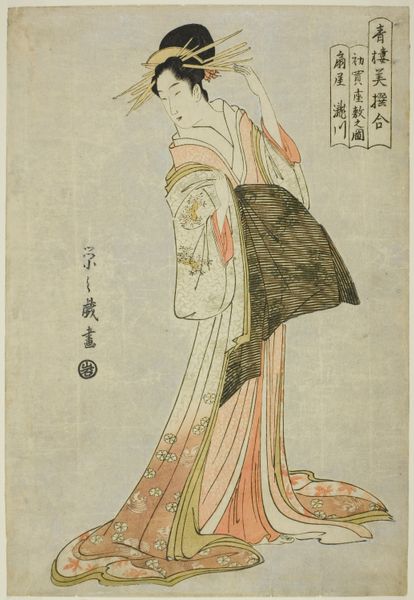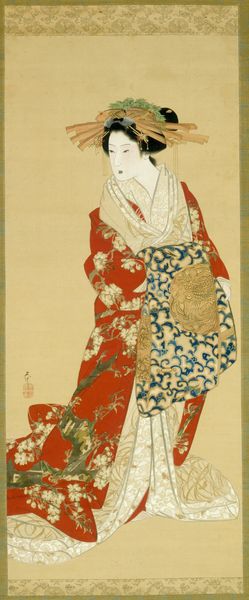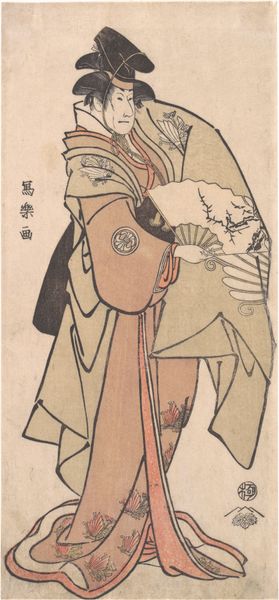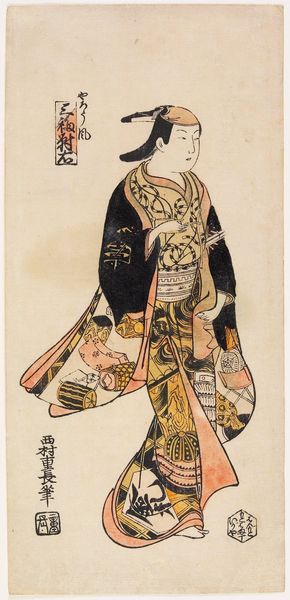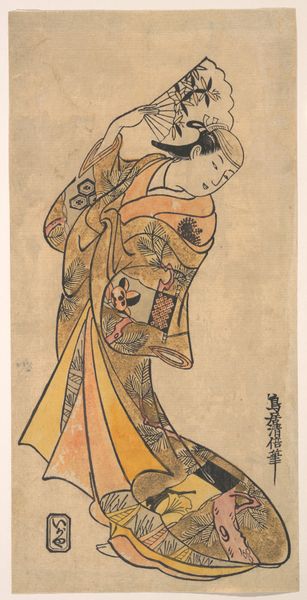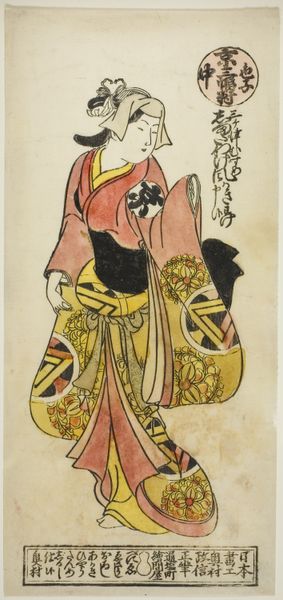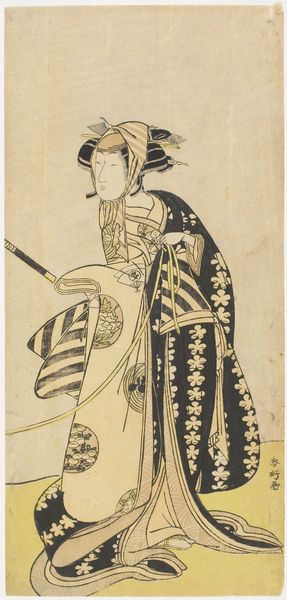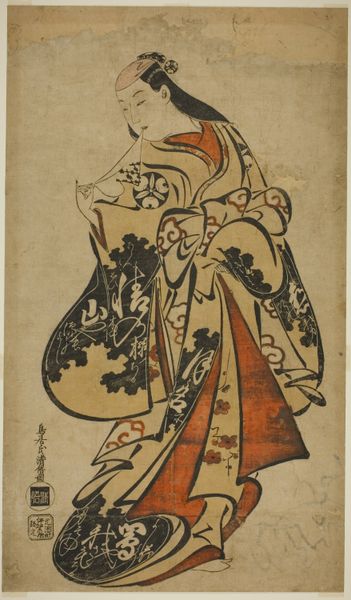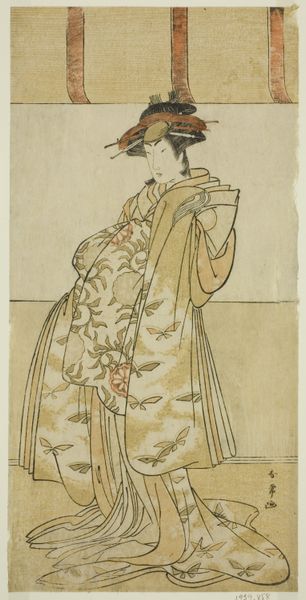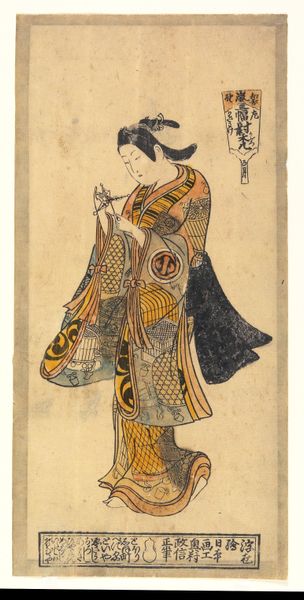
Standing prostitute wearing a kimono decorated with calligraphy c. 1730
0:00
0:00
painting, watercolor, hanging-scroll
#
portrait
#
painting
#
asian-art
#
caricature
#
ukiyo-e
#
japan
#
watercolor
#
hanging-scroll
#
watercolour illustration
#
genre-painting
#
watercolor
#
erotic-art
#
calligraphy
Dimensions: 36 5/8 x 18 5/16 in. (93 x 46.5 cm) (image)67 5/16 x 23 1/16 in. (171 x 58.5 cm) (mount) W 64 cm w/roller
Copyright: Public Domain
Curator: Take a look at this remarkable hanging scroll from around 1730, attributed to Takizawa Shigenobu. The artwork, rendered in watercolor, portrays a standing courtesan. Editor: First blush? She seems almost ethereal, draped in what appears to be a cloud of calligraphy. It’s more poetry than clothing. Curator: Precisely. This piece belongs to the Ukiyo-e tradition, popular during the Edo period, which often depicted transient aspects of life and entertainment districts. You’ll note the prominent calligraphy. This was no accident; it adds layers of meaning. Editor: It dances! Like the robe itself is telling a story. Is the text functional, decorative, or… both? Curator: Ukiyo-e prints often had poems inscribed on them, to reflect the theme or setting. In this particular painting, the artist depicts a courtesan. She is dressed in an elaborate kimono, richly decorated with dense calligraphy which served as both ornament and a cultural marker of her profession. Editor: So, clothing as cultural billboard, then. Beyond that, her composure suggests both worldliness and, perhaps, a trace of melancholy? Is that just me reading into it? Curator: That’s a fascinating reading, actually. Her profession carried complex social stigmas and some amount of idealization. Shigenobu balances that by emphasizing her humanity rather than simply objectifying her beauty. It raises complex ethical questions when viewed through a contemporary lens. Editor: Absolutely. I mean, look at how her posture subtly speaks of a story beyond just ‘being seen’. Almost like a haiku in paint. Curator: Indeed. The choice of watercolor also softens what could easily be a more hardened depiction. The painting embodies this duality: public display versus private emotion. It reflects societal dynamics of desire and objectification inherent to art. Editor: And the composition’s verticality, that elongated form, it amplifies a sense of grace and, paradoxically, isolation. It really holds you in this reflective space. Curator: I concur entirely, and that reflective space, as you called it, invites ongoing dialogue with a complex chapter in social and artistic history. Editor: Well said. Now, whenever I think of watercolors, I’ll always consider them as whispering secrets. Thank you.
Comments
No comments
Be the first to comment and join the conversation on the ultimate creative platform.
